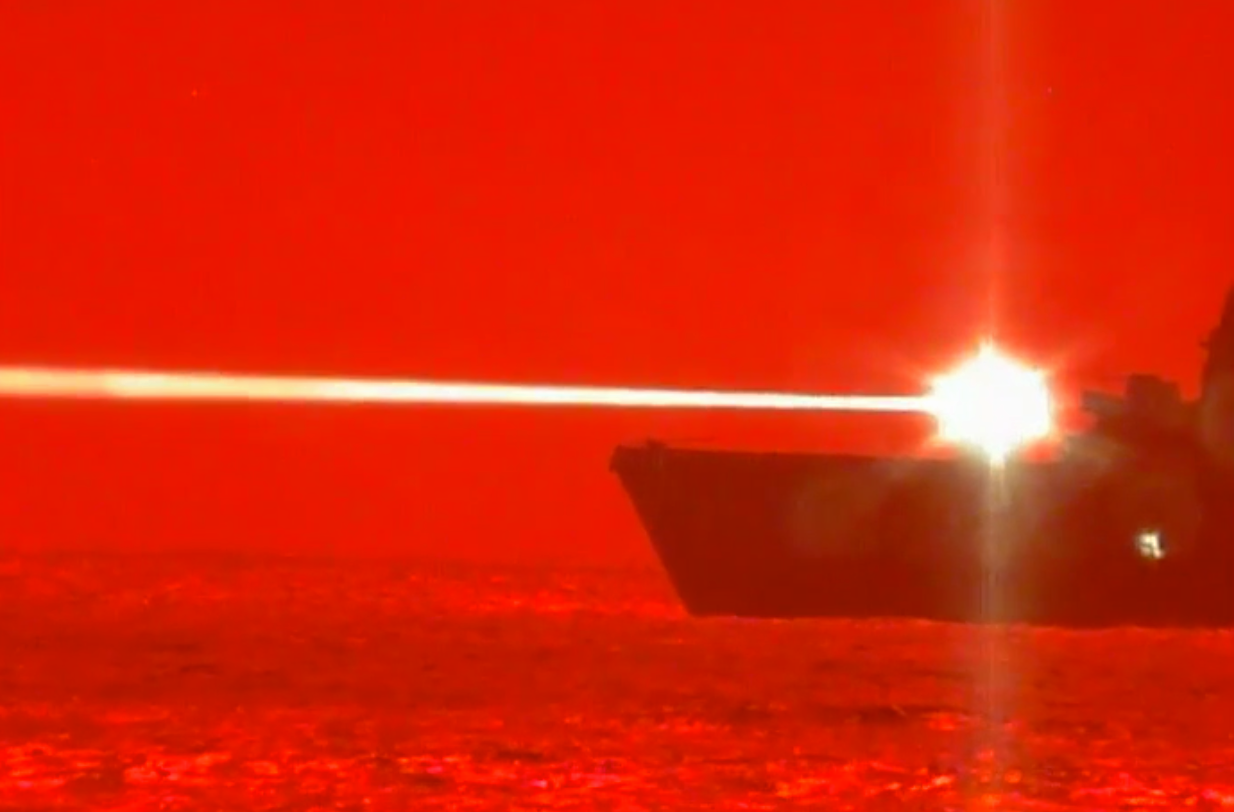SAM LAGRONE

The new head of the Naval Surfaces ARForces wants to accelerate the installation of directed energy weapons on surface warships, as the Navy grapples with low-cost, long-range attack drones proliferating widely in places like the busy commercial shipping lanes of the Middle East.
In his first address to the surface warfare community, Vice Adm. Brendan McLane argued the Navy needs to field lasers and high-powered microwaves on ships throughout the fleet. Developing these capabilities will be a major effort for the surface force, he said.
“I am not content with the pace of directed energy weapons. We must deliver on this promise that this technology gives us,” McLane told a crowd at the annual Surface Navy Association symposium on Tuesday.
A decade ago, McLane was the commander of USS Carney (DDG-64) in the Middle East at the same time the Navy authorized the crew of the then-afloat forward staging base USS Ponce (ASB(I)15) to use its $40 million, 30 kilowatt Laser Weapons System to counter threats headed toward the amphibious ship.
The lack of operational weapons on U.S. ships since fielding the laser on Ponce is “frustrating,” McLane told reporters last week ahead of the SNA conference.
“I really want to put a lot of effort into accelerating [directed energy] because that gives us so much when it comes to magazine capacity and in speed and distance,” he said.
Since Oct. 17, guided-missile destroyers in the Red Sea have actively shot down a variety of threats – from sophisticated anti-ship ballistic missiles to low-cost, Iranian Shahed 136 attack drones with a value in the thousands of dollars – fired by Houthi rebels in Yemen.
In the short term, the U.S. has used high-end interceptors – mostly Standard Missile 2s – fired from the destroyers to go after the aerial threats from the Houthis.
Navy officials said on Tuesday that the guided-missile destroyers operating in the Red Sea have intercepted more than 62 attack drones, rockets, cruise and ballistic missiles.
McLane, who took over as the top surface sailor late last month, referred to the directed energy capability several times during his appearance at SNA and said forward-deployed Littoral Combat Ships outfitted with lasers would be a good option for the Navy.
The Navy has developed additional laser systems that have been installed on a limited number of surface ships. In 2020, amphibious warship USS Portland (LPD-27) used a high-energy weapon system to down a target drone in the Pacific, USNI News reported at the time.

Artist’s concept of a HELIOS laser system aboard a U.S. destroyer.
The Navy installed the first high-energy laser with integrated optical-dazzler and surveillance, or HELIOS, aboard Hawaii-based destroyer USS Preble (DDG-88) in 2022. The 60 kilowatt laser was developed specifically to interdict attack drone threats, but has not been widely fielded in the fleet.
During the same call with reporters last week, the Navy’s director of surface warfare said the service is pushing industry to build more traditional missiles and other ordnance faster.
“Over the past two budget cycles, we’ve acknowledged that we need to increase inventory of all munitions, and we’re making those investments and we’re working very closely with industry to establish maximum sustaining rate buys,” Rear Adm. Fred Pyle said during the Friday call.
In terms of the current interceptions, he said preventing Houthi weapons from hitting their targets is worth the cost of the high-dollar munitions.
“I think about the cost of what this is, preventing rounds going into Israel, rounds going into [friendly units], rounds going into the maritime shipping industry and what that generates from a maritime standpoint of major shipping companies having to divert around the tip of Africa,” Pyle said.
“We are looking at other options right now. We, I would say we’re stable on our inventory, but it’s something we were very focused on and we continue to work on.”
No comments:
Post a Comment